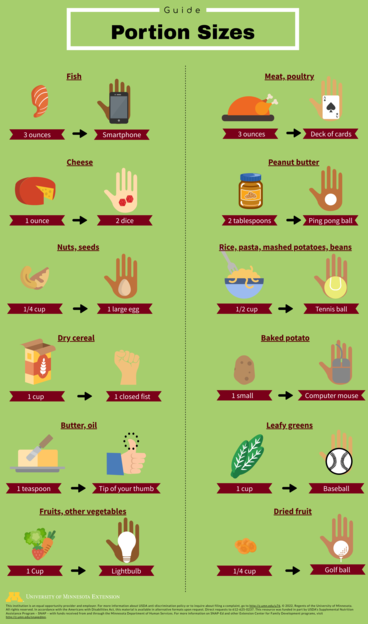What is a portion?
A portion is the amount of food that you choose to eat for a meal or snack. It can be big or small, you decide.
Compare this to a serving, which is a measured amount of food or drink, such as one slice of bread or one cup (eight ounces) of milk. Nutrition labels give you information based on the serving size. Sometimes, your portion of a food (the amount you choose to eat) is different from the serving listed on the label. That’s why you always want to check the serving size to have the full picture of the nutrition content of the food you’re eating. Learn more about how to check the serving size on the label reading page.

How can you tell what is the right portion size?
Most recommendations for portion sizes are given in cup measurements. But you’re probably not going to measure all of your food. Instead, check out our portion size guide that matches the portion recommendations for different foods with objects you are probably familiar with. When you’re deciding how much of a food to eat, try to match it to the size of the object.
Other portion size tips
- Think small when it comes to portions of animal products as they contain saturated fat. Enjoy your favorites, like steak, but make sure it’s only 3 ounces.
- Eggs have been linked to increased cholesterol levels, but recent research has put eggs back on the list of economical (less than $0.20 per egg) protein sources. Enjoy eggs as part of a healthy eating pattern along with a variety of other protein foods to stretch your food budget. Just be careful with the side dishes as cheese, bacon, sausage and fried potatoes that are high in fat, calories and sodium.
- Limit the amount of processed meat you eat. They are higher in sodium and contain preservatives that have been linked to certain forms of cancer.